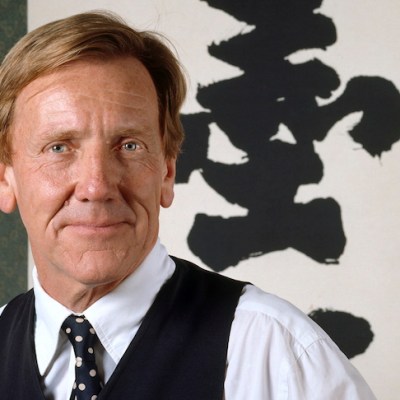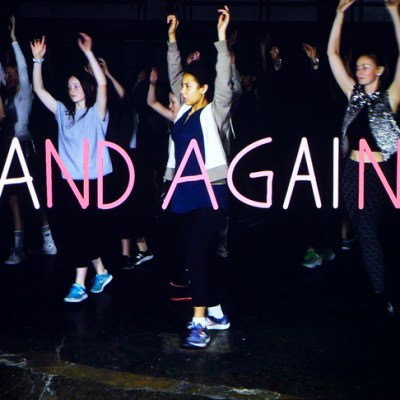From the May 2023 issue of Apollo. Preview and subscribe here.
A good-natured spirit of competition has always characterised the relationship between Australia’s two largest cities, Sydney and Melbourne. In the case of their respective state art institutions, the National Gallery of Victoria (NGV) in Melbourne has traditionally claimed pre-eminence by virtue of the size and quality of its collection and the earlier date of its foundation. In recent years, the NGV has also boasted a more impressive exhibition programme, but the Art Gallery of New South Wales (AGNSW) has now stolen a march on its southern counterpart with a spectacular new extension designed by the Tokyo-based architectural studio SANAA. In his introduction to the book of essays about the ‘Sydney Modern Project’ published to mark its opening last December, AGNSW director Michael Brand writes of ‘not only a physical expansion but also an opportunity to transform our state museum’. This has resulted in the greater prominence of Aboriginal and women artists, and artists from the Asia-Pacific region, and a radical design which seeks to reconceptualise the gallery’s function and purpose. It is safe to say that no public building in Sydney has elicited such strong opinions since the completion of Jørn Utzon’s Opera House 50 years ago this year.
Founded in 1871 in the oldest part of Sydney, the art gallery is located on the southern side of the harbour in the attractive green open space of the Domain, near the Royal Botanic Garden. In 1909 it acquired a neoclassical building constructed in local Sydney sandstone whose architecture is of a piece with other state government institutions of the time. Electricity and professional curators arrived in the late 1950s. An initial expansion in 1970 was followed by an additional wing built in 1988 to coincide with the bicentenary of the British colonisation of Sydney.
By this time the gallery had doubled in size under the leadership of Edmund Capon, who oversaw a series of major acquisitions and important exhibitions during his 33-year-long tenure. Capon broke with the Eurocentrism of the past by deaccessioning Victorian and Edwardian British paintings, creating the pioneering Yiribana Gallery for Aboriginal and Torres Strait Islander art (‘Yiribana’ means this way) and building a new Asian wing. He was also acutely aware that the successful future of the institution depended on a major new building project. When Michael Brand succeeded Capon in 2012, he took charge not only of 35,000 works of art, but also the raising of £191 million in what is Australia’s largest ever public-private partnership in the arts.
Sydney Modern, as the gallery’s new North Building will be known until a satisfactory Indigenous name can be found, stands next door to the existing South Building on Gadigal land of the Eora Nation. The challenging brief required SANAA’s Kazuyo Sejima and Ryue Nishizawa to design a building on a steep embankment as well as negotiate two turfed concrete slabs. One was a bridge over a multi-lane highway intersecting the Domain; the other concealed a disused fuel tank which had supplied the nearby naval base in Woolloomooloo during the Second World War. Sejima and Nishizawa resolved to turn the tank into a gallery, complete with its grid of black columns and residual smell of oil. They also had to consider the relationship of the extension to the existing gallery and incorporate views across the harbour. Their response was to create discrete galleries on four levels by means of a set of interconnected pavilions seemingly scattered on the site like playing cards.
With its understated profile at ground level, the new gallery is as different to the old as it is possible to be. Whereas the latter has stone steps leading up to a forbidding central portico, with austere right angles typical of neoclassical temples of art and learning, the North Building has a gently sloping open plaza under a corrugated glass roof supported by slender white columns. Its delicate structure, and white and beige colour scheme inevitably form a sharp contrast with the heavy monumentalism of the old gallery. Bíal gwiyúŋo (‘the fire is not yet lighted’) is the title of the garden artwork being created between both buildings by the Wiradyuri and Kamilaroi artist Jonathan Jones, with the intention of uniting them and celebrating the land’s Indigenous history. It is the largest ever commission of a First Nations artist in Australia and will become the third part of what is now described as a ‘campus’ when completed later this year.
Installation view of the Yiribana Gallery at Sydney Modern. Photo: © Art Gallery of New South Wales/Zan Wimberley

The first thing you see when you enter at ground level is the Yiribana Gallery, transplanted from the basement of the South Building. The inaugural display is drawn from one of world’s largest collections of its kind, and is inspired by the local Aboriginal word burbangana, meaning ‘take my hand and help me up’. The continued placing of First Nations art in a dedicated gallery, albeit a much more visible one, gives some pause for thought, bearing in mind the decision to display Australian art with international work for the first time elsewhere. The inclusion of the Pukumani grave posts in the 20th-century galleries in 1959 set an important precedent, and a thoughtful rehang of the collection in the South Building brings together in an exhilarating way Fred Williams and Sidney Nolan not only with Picasso and Francis Bacon, but also Jimmy Lipundja and Mungurrawuy Yunupingu.
Many visitors find that Sydney Modern is best experienced by beginning not on ground level, but four floors down in the dark space of the Tank, where The End of Imagination, a dramatic sculptural installation by Adrián Villar Rojas, is lit up in stages by moving spotlights. The extent of the natural light flooding the interstitial spaces on the upper levels may seem surprising given Sydney’s sub-tropical climate, but they are as considered as the galleries themselves.
Installation view of Adrián Villar Rojas’s The End of Imagination (2022) at the Art Gallery of New South Wales, Sydney. Photo: Jörg Baumann; © Adrián Villar Rojas

That the AGNSW is unafraid to challenge received ideas about how to show and see art is also evident in its programme of nine commissions: six by women artists, two of them from Indigenous backgrounds. Spread across both buildings, it is the largest in the gallery’s history. An enormous screen overlooking the central atrium in the North Building shows Groundloop, a video narrating a fantasia of the Pacific by the New Zealand artist Lisa Reihana. The Taiwanese-American artist Lee Mingwei’s Spirit House installation, incorporated into the rammed-earth outer wall on a lower level, invites visitors to reflect in the presence of a bronze Buddha and perhaps take the wrapped stone they may find in his hands, with a view to returning it one day. Participation is also central to ‘Making Worlds’, one of several small themed exhibitions (replacing an opening ‘blockbuster’), a highlight of which is Archive of Mind (2016) by the Korean conceptual artist Kimsooja. In a spacious column-free gallery, one wall of which is plate glass, visitors are invited to create clay spheres and place them on an enormous round table.
For some, the new gallery is too populist and commercially minded (its empty spaces can host large receptions), but Sydney Modern must be given time to evolve. Meanwhile it remains to be seen what kind of relationship it can develop with the less well-funded but enterprising Museum of Contemporary Art, which has overlooked Circular Quay since 1991. And then, as always, there is the challenge of Melbourne, as NGV Contemporary will instantly become Australia’s largest gallery of contemporary art and design when completed in 2028. It is hoped a new place will have been found by then for Reclining Figure. Angles (1980), Henry Moore’s much missed bronze sculpture which had to give up its home on the grass next to the old Art Gallery to make way for the construction of Sydney Modern.
From the May 2023 issue of Apollo. Preview and subscribe here.


